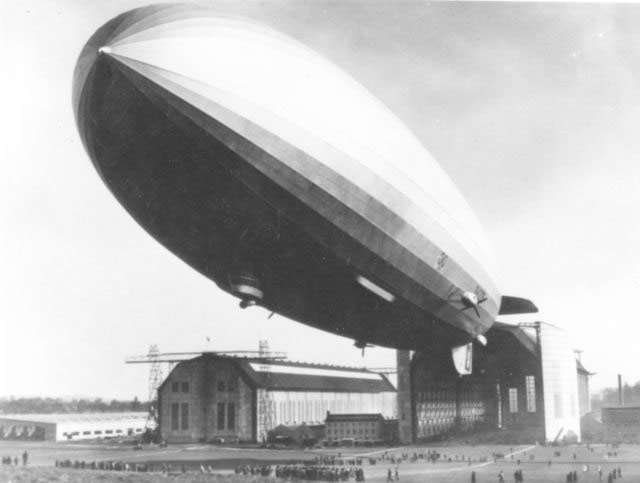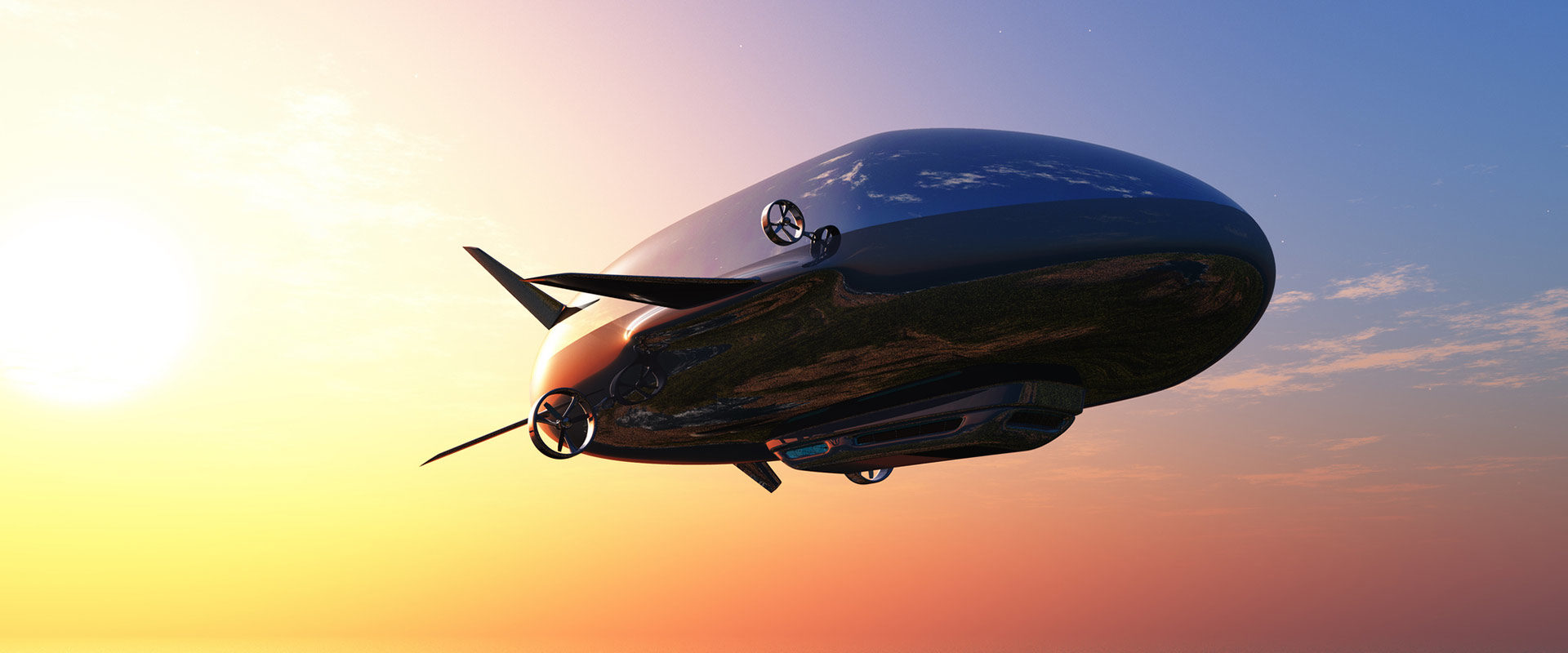Could helium blimp be a solution to climate problems? Today’s airships are a sustainable mode of transport that generate less carbon per person than aeroplanes. While also being less cramped, noisy, and uncomfortable.
Some people might recognise airships, or rather Zeppelins from history but their era ended. Nowadays airships significantly differ from the ones that existed over 80 years ago. Advanced technology is bringing a new opportunity for the blimps to be an eco-friendly, safe and fast way of travelling. Furthermore, the new air balloons have the potential to change aviation.
The comeback of Airships
The air pollution and carbon emissions produced by airplanes are the contributors to climate change. But the world without air transport doesn’t seem real anymore. This is why companies search for alternatives that will be safe for the environment and easy to commute. One of the machines making it possible is an airship.
Even though this mode of transport might seem new for some people, the history of airships started in 1783. In that year two brothers from France designed a hot-air balloon. Then in 1900 Ferdinand Zeppelin, a German military officer, invented the rigid airship and named it by his surname. In 1937 one of the Zeppelins, called Hindenburg, fell on the ground. The disaster caused confusion because it was recorded on camera and released to the public.

Since that catastrophe, airships were put away. As a result, in today’s world, they are possible to see only in fantasy books or movies, or on adverts. There are available flying balloon sightseeing journeys at times. But reality will soon bring airships to life. One of the first production models of the massive Airlander airship will be the first to travel to the North Pole since 1928.
Greener way to travel
In 2019 planes consumed 18.27 billion gallons of fuel. That is not even close to being carbon-neutral. To feel less guilty about flying, airships are the solution. Blimps have a very low net weight of aircraft because of the lifting effect of the helium. Thus they produce very low fuel burn. If the future brings this means of transport for commercial flights, the way of travelling will be easier and the Earth air cleaner.
The new helium blimps are powered by a hybrid of combustion and electric engines. In comparison to aircraft, the hybrid electric-powered vehicle offers a 90% carbon emission reduction. However, many companies want to design fully electric airships by 2030 and offer zero-emissions flights.
Blimps offer a luxury cruise through clouds with almost zero noise. They are capable of carrying up to 20 passengers but the new airships will be able to ferry up to 100 passengers. That means, there are plans for airships to travel commercially. With its ability to take off and land almost everywhere, they are a big competitor for aeroplanes.
Airlander 10
Airlander 10 is a new airship designed by a British company, Hybrid Air Vehicles (HAV) founded in 2007 by British airship pioneer Roger Munk. As HAV ensures Airlander ‘creates efficiency through technology’. HAV’s flying blimp is a hybrid-electric prototype with floor-to-ceiling windows for incredible views and natural light. The company wants to give the service starting from 2025 and then build 12 airships in a year.
Tom Grundy, HAV’s chief executive, mentioned for the Guardian that the Airlander is not a ‘luxury product’ but a practical solution to challenges posed by climate change. Grundy added that the fast ferry, as he keeps calling the new air machine, could make connections like aeroplanes. This means to travel between cities that are 230 miles (370 km) apart. But in contrast to aircraft, with 10% of the carbon footprint from 2025 and even smaller emissions in the future. As there are plans to make airships powered all-electric.
The airship was under discussion for several airlines to operate on their routes. One company with whom they signed a contract is OceanSky Cruises, a Swedish travel firm. The enterprise offers an ‘experiential travel’ over the North Pole with Arctic explorer Robert Swan.
The design behind Airships
The way that Airships are built is putting this mode of transport above aircraft. They are safer for the environment and more convenient modes of transport. Besides that, airships don’t require special infrastructure. They can take off and land without a runway. Improved Zeppelins can land closer to cities.
Airlander is a customizable, low-emission commercial aircraft with its hybrid and electric configuration. The Airlander is also quite small which doesn’t make it a perfect air vehicle for heavy lifting. But it is improved with helium that in combination with other technologies allows for keeping a large payload for a long time (max. 10-ton). For companies seeking heavy lifting cargo solutions, it is better to wait for the Airlander 50 that is larger and already designed.
Besides Airlander there is a France-based LCA60T, called a ‘Flying Whale’. It is a big airship in the shape of a blue whale that can collect and drop cargo without landing. The uniquely designed airship can save risk and cost while ensuring the project’s success. It is 150 metres long with a 66-ton payload. With its hi-tech skin, electric engines, and advanced ultracapacitors, it can carry objects of any size and cruise around 62 miles per hour.
Why Airships may be the future of air travel?
A lot of engineers work on electric cars as alternatives to fossil fuels. But the transformation towards a low-carbon future has to happen on the land and in the air. The new Airship is not only limited to travel and tourism purposes but is a perfect solution for cargo companies. As it can access anywhere without the need for infrastructure on the ground.

Airlanders do not consume a lot of energy and are extremely efficient with their simple design. New helium blimps can easily transport large liquid hydrogen tanks. Airships can be used for a variety of missions, including humanitarian disasters, natural resource extraction, and large cargo transport. It is also possible that airships will become more widely accessible.
Frequently Asked Questions
Airships were used over 80 years ago and now, more than ever before, have their comeback. Airships can change aviation as an environmentally friendly means of transport for passengers and to deliver goods to many countries.
Two basic elements airships are made of is a balloon and an engine-driven propeller. In the past, the problem was finding a light powerful engine. The new Airlander is built from a strong liquid crystal polymer called Vectran.
Airships can help with reducing fuel use as well carbon up to 90% that making them environmentally friendly modes of transport. They are also much more fuel-efficient than aeroplanes. This means that they are burning much less gas by working half as hard as a plane.
Since the catastrophe of Hindenburg in 1937, many airships stopped being modes of transport in use. However, soon airships might be used again. One company that wants to bring airships to life is Hybrid Air Vehicles (HAV). Their Airlander is supposed to operate flights by 2025.
Airships can operate below 20 000 and above 60 000 feet (high altitude airships). But the current world’s largest flying aircraft Airlander 10 will be able to fly up to 20 000 feet. The Airlander can stay in the air for five days with a maximum range of 4 000 nautical miles and about 4 603 miles with its hybrid capabilities. The top speed Airlander can fly is 130 kilometres per hour.
The most famous airship that crashed was one of the Zeppelins. On May 6, 1937, the airship Hindenburg, the world’s largest dirigible and Nazi Germany’s pride, bursts into flames. It touched its mooring pole in Lakehurst, New Jersey, with 61 crew members and 36 passengers from which 23 passengers and 39 crewmen survived.
According to the Van Wagner group, only 25 blimps are operating currently in the world and even fewer Zeppelins. Airships are mostly used for advertisement purposes or covering sports events. But recently, the interest in airships is alive again. Hence that there are plans to bring back airships soon for transporting heavy cargo loads as well as for military or civilian purposes.
Nowadays, airships are mostly used for advertising purposes and sightseeing. One, Airlander, was formally developed for the US military. After program cancellation in 2013, the craft came back to the UK, rebuilt for civilians and named Airlander 10. The airship survived seven test flights to finally retire in 2019. But the plans are to start flying commercially in 2025.
The airship was originally called a ‘dirigible balloon’ by its French inventor Henri Giffard in 1852. Giffard designed a 160-kilogram (350-pound) steam engine with 3 horsepower, enough to spin a big propeller at 110 revolutions per minute. But 1783 can be a date considered as the beginning of airships. In that year two brothers from France invented the first hot-air balloon. And in the 1900 era of Zeppelins began following Ferdinand’s Zeppelin design.
Airships are also called blimps, helium blimps and Zeppelins. The popular nickname online for an airship is ‘flying bum’ (because of their shape). Airships are also called ‘dirigible balloons’ or just flying balloons.











